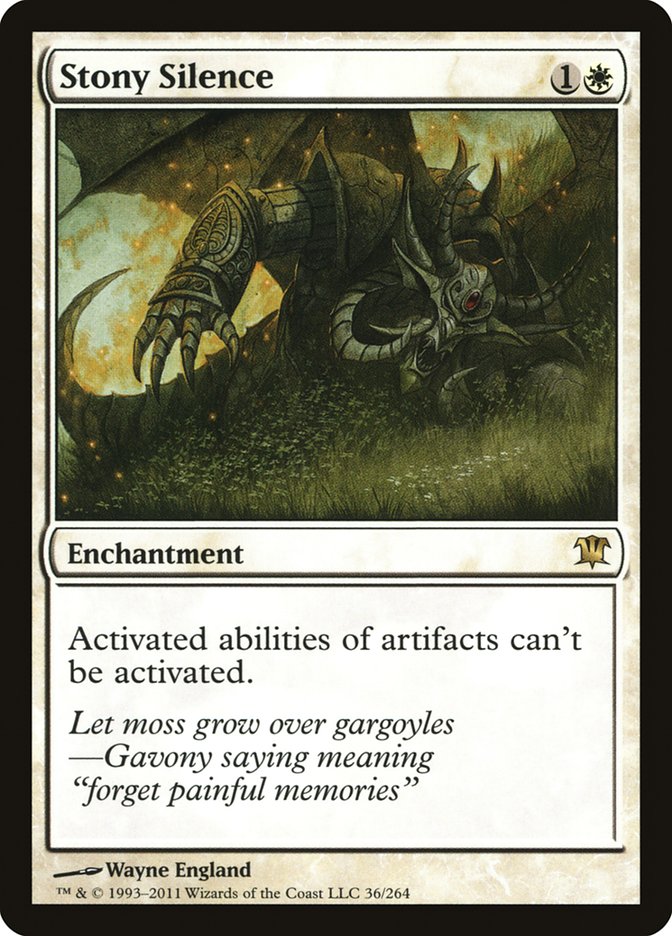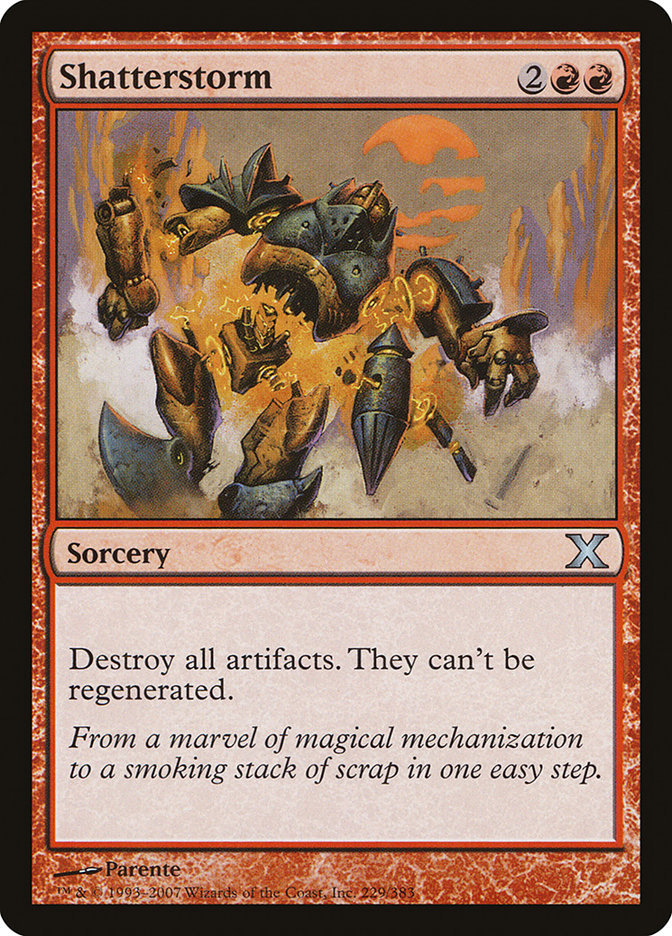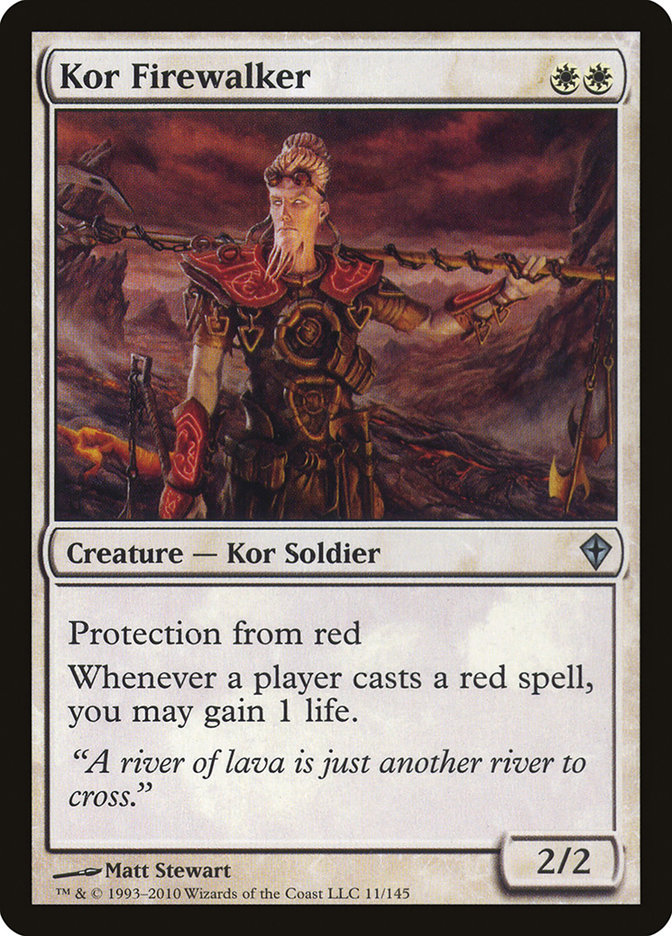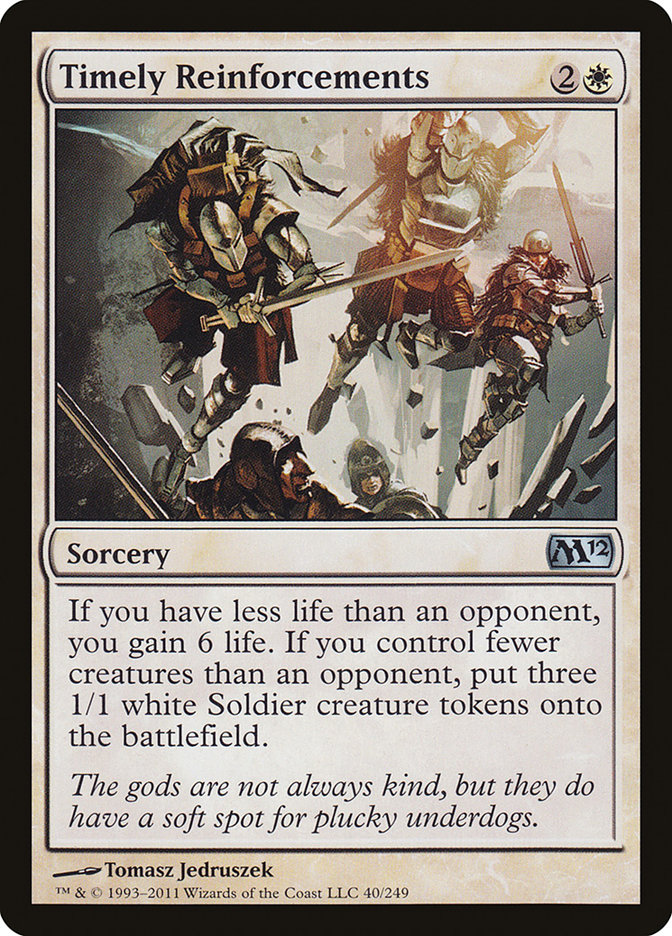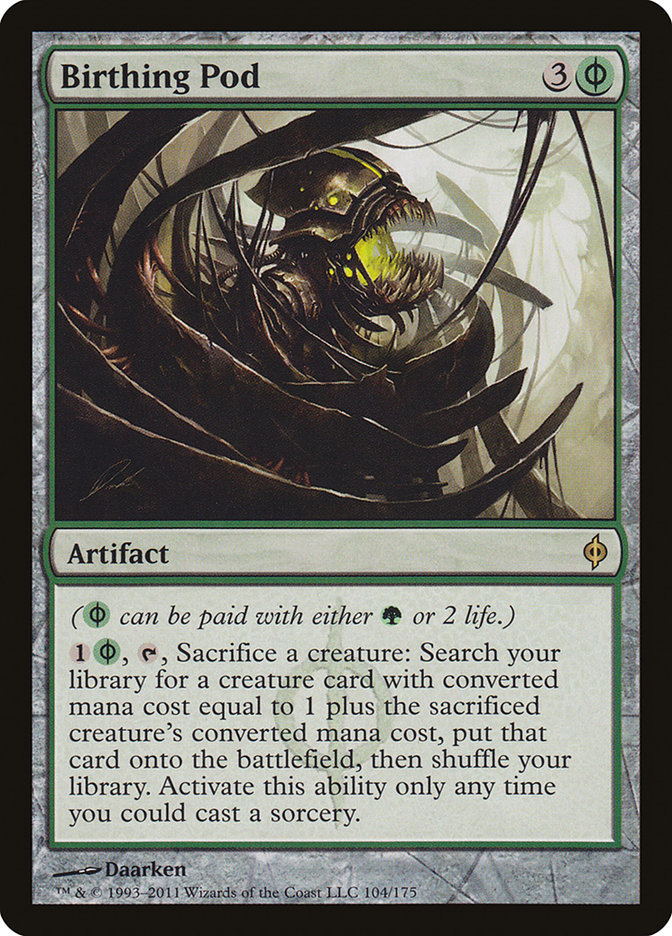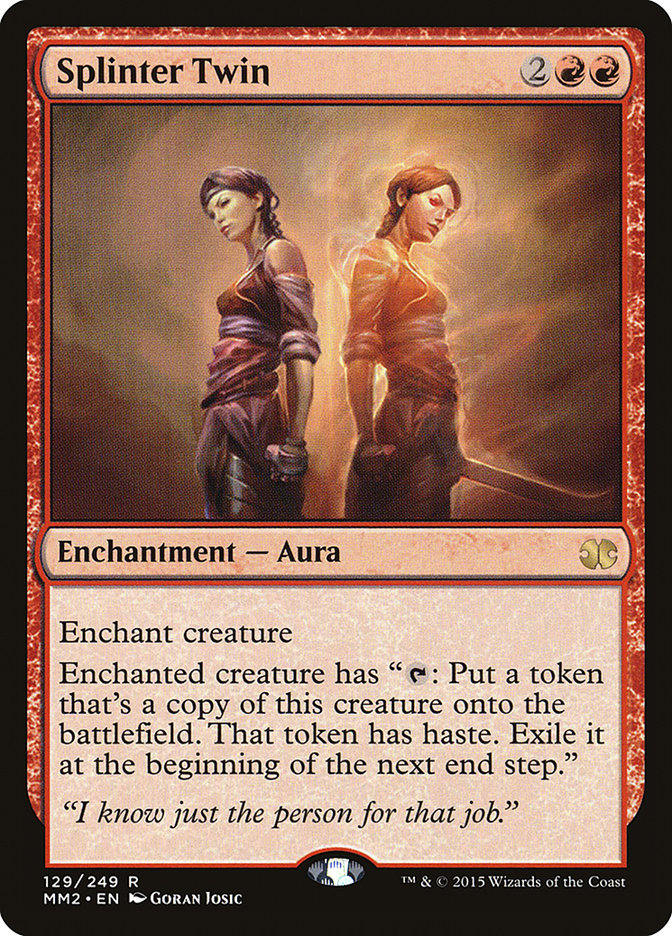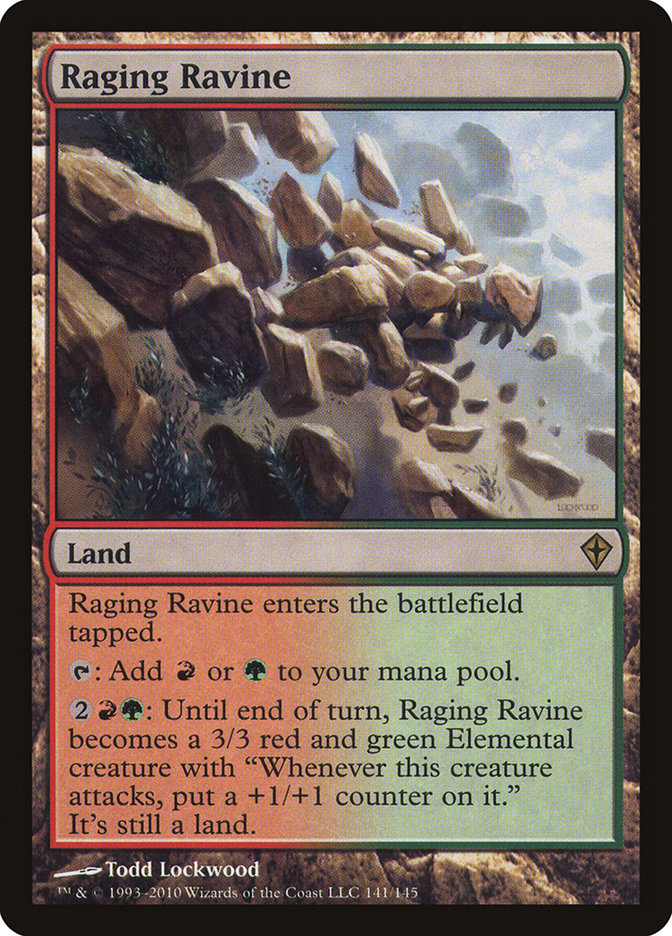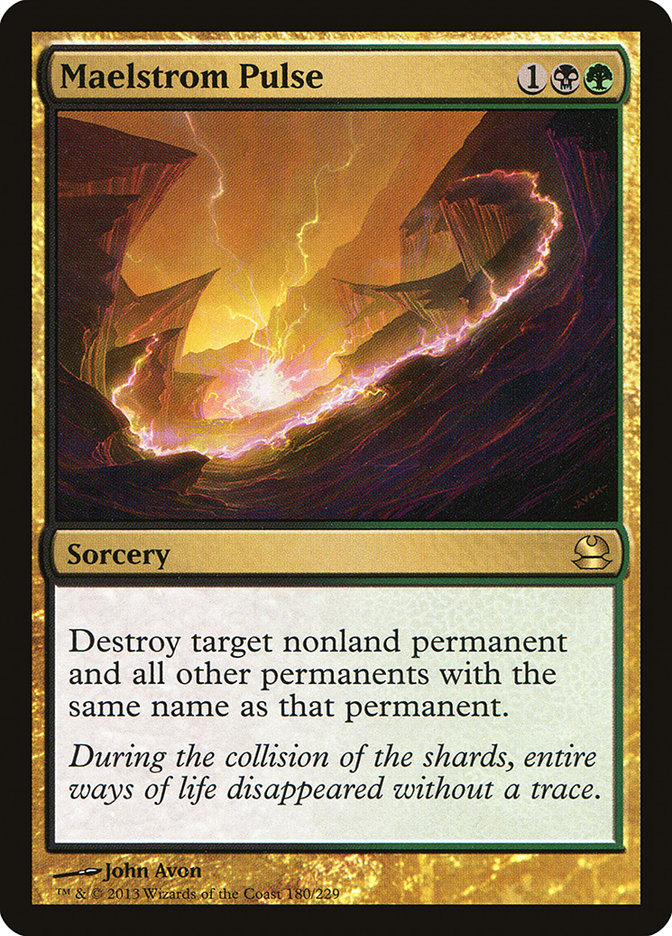Modern has been a tough nut for me to crack over the past year. I had a bit of success playing the linear aggressive decks of the format in Burn and Affinity, but I ended up having a lot more failure and moved on looking for things that were more stable.
Don’t get me wrong; Burn and Affinity are both great decks. They are definitely capable of winning tournaments and earn their places near the top of the metagame. Both decks came with some pretty frustrating drawbacks, however.
For Affinity, I got sick of losing to hate cards. Cards like Stony Silence; Shatterstorm; Kataki, War’s Wage; and Hurkyl’s Recall (with Flashback!) would take games that were close and competitive and flush them down the toilet. If I was fortunate, I would dodge the hate and could win the tournament, but I wanted to play something that was more resilient to its targeted hate spells.
From there I decided to look at Burn. Burn also has hate cards that are very good against it, like Feed the Clan, Timely Reinforcements, Obstinate Baloth, and Kor Firewalker. However, for the most part, Burn has natural resiliency to those cards. The list I liked to play had four Atarka’s Command and two more Skullcrack in the maindeck. The other two Skullcracks were in the sideboard, so with some careful playing, you could sniff out your opponent’s lifegain and make sure it couldn’t ruin your day.
Even though Burn had shored up the problems I was having with Affinity, there were other issues that resulted in the same deal-breaking experience of losing too many games that are out of the pilot’s control. In this instance it was the mana.
Burn is a strange beast in that it’s very consistent but at the same time very inconsistent. All of the cards essentially do the same thing: do damage to your opponent. However, there are zero card selection spells in the deck, so you are basically at the mercy of the top fifteen cards of your library. Sometimes you would only draw one land and wouldn’t be able to deploy your burn spells quickly enough to finish the game in a format as fast as Modern. Other times you would draw five or more lands and just wouldn’t have the raw number of spells to get the twenty damage you need to win. There were too many games where I found myself in topdeck mode and left my matches up to fate. Once again, the deck was powerful and definitely a respectable metagame presence, but I wanted to be a little more in control of my own destiny.
For the past few months I have been pretty lost in the Modern jungle. There are a ton of very cool decks in Modern right now. Unfortunately, the nature of the format has made it really hard to find something that was both powerful and consistent. I had tried several different “fair decks” but have been failing miserably with them. I couldn’t find anything that had a powerful enough game plan to handle the various powerful decks in the format.
What makes Modern so tricky is that all of the decks are so good. Burn is great, Affinity is great, Infect is great, Abzan Company, is great, Tron is great. Also, Tier 2 of the metagame is full of great decks. Elves is great, Scapeshift is great, Ad Nauseam is great, Living End is great, Hexproof is great. You get the idea.
The Modern format is a different beast from when it was birthed. The newest block was Innistrad, which gave the format a size of eight blocks. This was reminiscent of Old Extended, which carried a seven-block rotation. These days, the newest block will make Modern a fourteen-block mammoth!
What we are currently looking at is a format that feels a lot closer to Legacy than Old Extended in terms of power level and size. The linear proactive Modern decks are starting to look more and more like the linear Legacy decks. However, Wizards doesn’t make cheap powerful reactive cards anymore that would scale the reactive decks appropriately with the proactive ones.
With a format this size, it’s incredibly hard to prepare for everything appropriately, if not impossible. The best course of action for a reactive deck is to be proactive too, whatever it is you are doing. There will be matchups where your reactive cards just don’t match up well with the ones your opponent decided to bring.
This is why the best decks in the format had been Birthing Pod and Splinter Twin strategies. That’s why the consensus top dog right now is Abzan Company. These decks are combo decks and something else at the same time. You can be a control deck or a green creature deck some of the time, but if that gameplan isn’t set up appropriately for the matchup, you have the option to combo them instead. It’s a very powerful archetype in such a metagame.
I would be happy trying out Abzan Company, and a lot of my teammates have had success going down that road. However, just before deciding to go down that road, I think I came across exactly what I was looking for.
For #SCGMKE, I decided to give Thoughtsieze, Tarmogoyf, and Liliana of the Veil a try. I have always been a fan of Thoughtseize’s ability to give you perfect information and let you figure out the next several turns of the game on the spot. I really liked the look of Craig Krempels’s Invitational list, and after changing a couple of cards, I went to battle with this.
Creatures (14)
Planeswalkers (3)
Lands (24)
Spells (19)

Unfortnately, I had a disastrous weekend, failing to win a single match. But Jessy was able to take the deck to a respectable Top 32 finish. After reflecting on the weekend, I decided that I still was a fan of what the core of the deck was trying to do: disrupt your opponent with discard spells and follow it up with powerful threats to end the game before the opponent has a chance to catch up.
I was attracted to the prospect of getting to play with Siege Rhino again, and Lingering Souls seemed like a great way to combat Affinity and Infect. However, I was looking at the deck as a collection of good cards that I liked, which was entirely the wrong way to approach this type of deck. After playing with Abzan, I think that the deck is actually a poorly built version of Jund.
Here is what I played this past weekend at #SCGINDY.
Creatures (14)
Planeswalkers (4)
Lands (24)
Spells (18)

Why is Jund a better deck than Abzan?
When you take a look at G/B/x decks like Jund and Abzan, you need to be able to understand what the deck is doing. All of the cards in Jund are good cards, but they are not merely just a collection of good cards. There is a very specific gameplan at play here.
Jund is a resource denial deck operating around point discard, cheap creature removal, cheap threats, and Liliana of the Veil. The important part of this sentence is cheap. Abzan takes the first couple of turns playing cheap interaction spells and then spends the next several turns playing one expensive threat per turn. Jund sacrifices very little in power, but in exchange gets to condense its entire mana curve significantly. This increases the effectiveness of your discard because games tend to be a lot shorter, which means your opponent has fewer draw steps to mitigate all the hard work Inquisition of Kozilek and Thoughtseize have done.
Another benefit of playing Jund is that your mana is much better than Abzan’s. I can’t stress enough how good Blackcleave Cliffs is in this deck. Having a painless untapped black two-color land on any of your first few turns of the game allows you to save a very noticeable amount of life over the course of a tournament. Also, Raging Ravine is miles better than the creature-lands Abzan has access to.
Finally, Jund gets to play Dark Confidant. While you could play Dark Confidant in Abzan, most people choose not to because the mana curve of the deck is so much higher. It’s hard to appreciate just how good Dark Confidant is until you play with it a bit. Jund is all about making trades, and having access to an extra card per turn is absolutely game breaking in this deck. He will often be killed on sight, but your discard can do a good job of protecting him. If he gets to live, your opponent will likely not.
If you take a look at this deck, you will notice there are some cards many people think of as staples that have been cut. Kitchen Finks had an incredibly awkward mana cost, so we got rid of it. Maelstrom Pulse was a three mana sorcery-speed removal spell, so we got rid of it. Kolaghan’s Command was another three-cost removal spell with varying effectiveness depending on the matchup, so we moved it to the sideboard.
In their places we put the very efficient Slaughter Pact and Seal of Fire. Having these very cheap answers in our deck allows us to do two things in a turn very quickly, as early as turn 2, and deploy a threat and an answer as early as turn 3. That is what Jund is all about, disrupting the opponent’s plan with discard and creature removal just enough to ride your powerful two-drops to a quick victory before the various decks of Modern have a chance to catch up.
The other noticeable difference this deck has over the typical Jund deck is that the four-drop slot has been streamlined. Instead of a smattering of Pia and Kiran Nalaar, Huntmaster of the Fells, or Olivia Voldaren, we have decided to go with a bunch of the hottest new four-drop of the summer: Kalitas, Traitor of Ghet.
This is partly a metagame decision. Kalitas matches up excellently against Abzan Company and Burn, but it’s also because the card is totally amazing. When your deck has a full twelve removal spells, it is incredibly easy to start making Zombie tokens. Also, Kalitas makes chump blocking and racing a Tarmogoyf a massive headache. He is resistant to Lightning Bolt and immune to Abrupt Decay. Since starting Kalitas as a three-of, I feel confident he is by far the best option right now, and probably the best option in a vacuum going forward.
The aforementioned new removal we have added to the deck is a nod toward Kalitas as well. Both Seal of Fire and Slaughter Pact have the very valuable feature of making the investment to pay for the removal spell on a different turn from when you use them. Between them and Liliana’s minus ability, it is really easy to kill one of your opponent’s creatures the turn Kalitas hits the battlefield.
Kalitas being a legend hasn’t been much of a drawback so far. In a similar manner to Jace, the Mind Sculptor, Kalitas takes over most games he is a part of. Therefore, it doesn’t matter much if you have a copy stranded in your hand because the first one is killing them. If they deal with your first one, the second can come down and get right back to work. Also, you can easily pitch extra copies you don’t need to Liliana of the Veil.
Is Jund boring to play? Well, I used to think so, and I can appreciate why many others would think so too. After testing with it a bunch this week, though, I think I can safely say I’ve found a new home in this format. I’ve been having a lot of fun getting to craft out games on turn 1 after casting my discard spell and gaining small edges over a quick game to put opponents playing all kinds of decks away one after another. The deck feels more like a mix between Zoo and Pox than the good-stuff Jund deck of days past, and I can’t wait to play it this coming weekend at #GPCharlotte.


